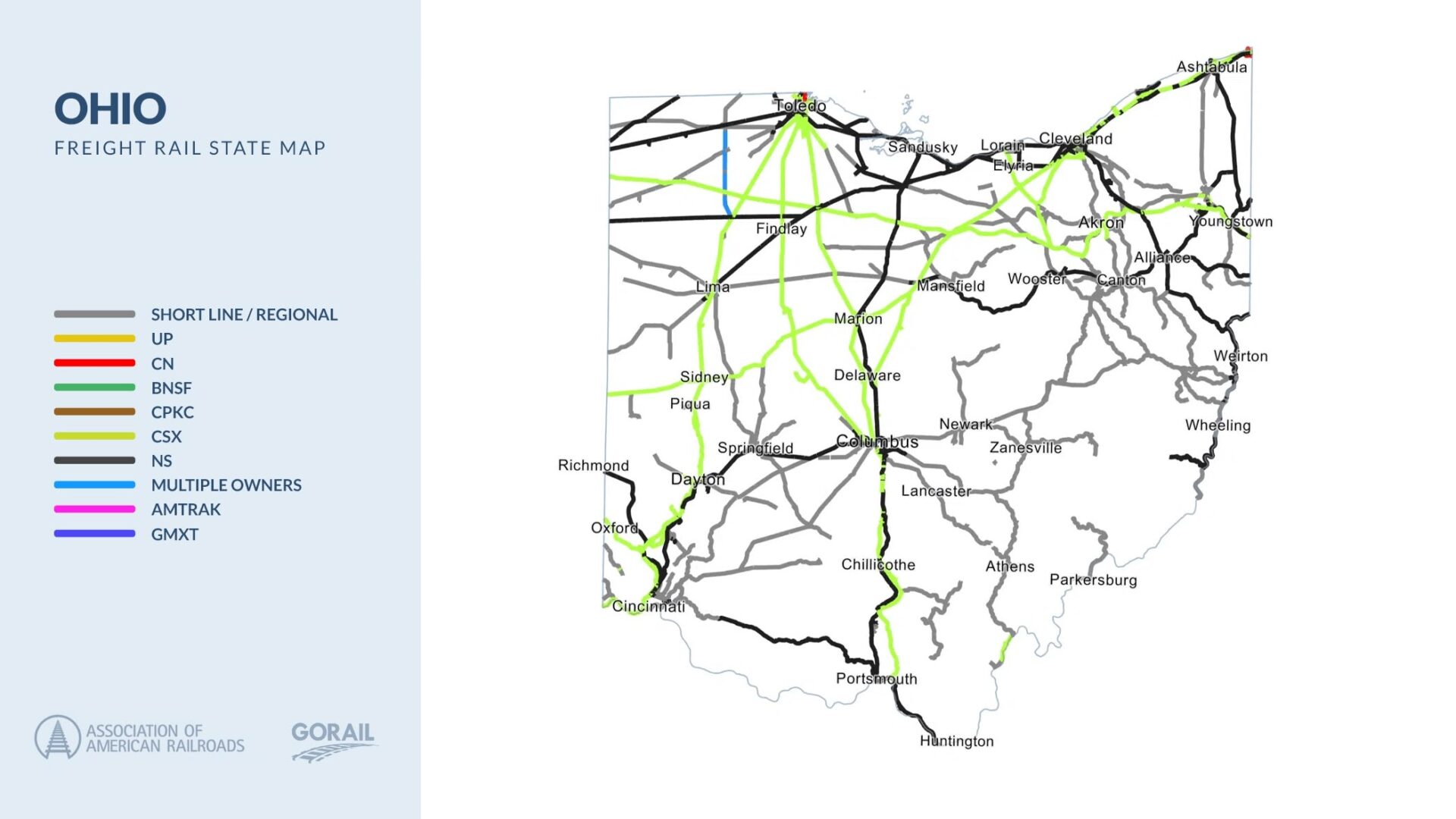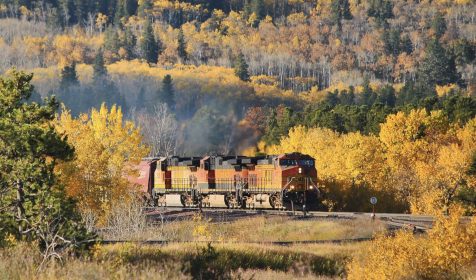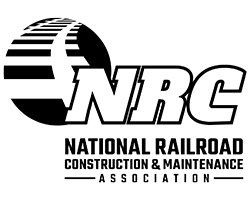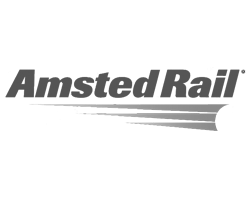Railroads are Pulling Their Weight In the Buckeye State
Dating back to the 19th century, railroading in the Buckeye State was critical to economic development. In the north, rail provided a connection to the Great Lakes, and in the south, Cincinnati once served as the rail hub of the nation. A lot has changed since the early days of statehood, but freight rail remains an economic driver. Today, Ohio has the fourth largest rail infrastructure, the second highest number of intermodal terminals in the nation, and is home to one of the highest concentrations of rail supply companies.
Ohio’s 44 freight railroads operate over 5,112 miles of track and employ 4,807 in the Buckeye State.* It would have taken approximately 14.3 million additional trucks to handle the 258.2 million tons of freight that started, ended, or moved through Ohio in 2023. Moving freight by rail prevented 5.16 million tons of greenhouse gas emissions, the equivalent of taking 1.01 million cars off the road or planting 78.1 million trees. Intermodal and nonmetallic minerals comprise the majority of freight rail shipments beginning in Ohio. Intermodal shipments and coal are the largest rail imports to the state.
*2023 data























